 |
乳腺癌手术乳腺癌手术是一种通过手术切除肿瘤的治疗方法。它可以作为单一治疗方式,或与其他治疗如放疗和化疗联合进行。 对于某些高风险人群(例如携带 BRCA1 或 BRCA2 基因突变者),乳腺癌手术也可作为预防性选择,以降低未来罹患乳腺癌的风险。 乳腺癌手术的类型多种多样,具体适合哪种手术方式,将由医生根据个体情况综合评估后决定。
|
 乳房肿瘤切除术(Lumpectomy)
|
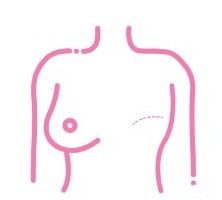 乳房切除术(Mastectomy)
|
| 差异与细节 | |
| 切除范围 | 乳房肿瘤切除术: 部分乳房 乳房切除术: 整个乳房 |
| 额外手术 | 乳房肿瘤切除术: 切缘未清晰时需再次切除 乳房切除术: 可能包括重建手术 |
| 康复 | 乳房肿瘤切除术: 平均数天至两周 乳房切除术: 平均4-8周 |
| 放射治疗 | 乳房肿瘤切除术: 推荐 乳房切除术: 除非淋巴结受累,否则不推荐 取决于肿瘤生物学特征及分期 |
| 住院时间 | 乳房肿瘤切除术: 1-2天 乳房切除术: 3-5天 |
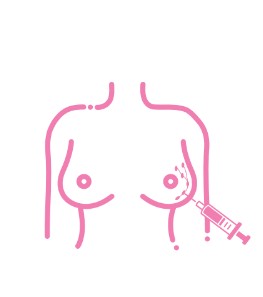 腋窝淋巴结去除
|
 乳房重建手术
|
乳腺癌手术通常是安全的,但仍可能出现少量并发症,例如:
- 伤口愈合问题
- 疼痛
- 出血
- 感染
- 淋巴水肿(手臂肿胀)
- 浆液肿(手术部位积液)
- 胸部、上臂内侧(因腋窝手术)及重建乳房的感觉丧失或异常
如出现上述任何并发症,请及时告知医生。
新辅助治疗
新辅助治疗是指在手术前进行的治疗。根据肿瘤特征,新辅助治疗还可包括靶向治疗。
常规治疗流程
| 流程 1: 手术 |
| 流程 2: 术后辅助治疗 |
新辅助治疗流程
| 流程 1: 新辅助治疗 |
| 流程 2: 手术 |
| 流程 3: 术后辅助治疗 |
您是否需要接受新辅助治疗?
通常,当肿瘤过大无法直接手术切除或已转移至淋巴结时,会考虑新辅助治疗。根据国际治疗指南,下列患者可能获益:
- HER2阳性或三阴性乳腺癌(TNBC)患者
- 肿瘤直径大于2厘米或伴随淋巴结受累的患者
新辅助治疗在提高治疗效果方面具有优势,包括更好地保留正常乳腺组织并提高生存率。
缩小肿瘤
新辅助治疗可在手术前缩小肿瘤,提高保乳机会。
监测肿瘤反应
在新辅助治疗中,医生可监测肿瘤对药物的反应。若肿瘤完全消退,患者的康复率与生存率更高。
简化手术
新辅助治疗可降低手术难度并减少手术并发症风险。
个体化治疗
依据患者对新辅助治疗的反应,医生可选择更个体化且有效的术后辅助治疗方案,以降低复发率。
营养营养在乳腺手术后的康复过程中起着重要作用。
有关具体饮食指导及推荐营养摄入,请务必与医生或营养师沟通。
|
 |
应对恶心/呕吐
⚠️ 术后恶心的应对
手术后常见这些症状,尤其是在接受过化疗或放疗的情况下。
✓ 缓解恶心的小贴士:
- • 少量多餐: 将三餐改为每日5–6次小餐
- • 易消化食物: 可选择蛋白奶昔、酸奶及液体营养饮品
- • 清淡汤品: 如鸡肉蔬菜清汤,对胃更温和
若恶心持续,请咨询医护人员以评估止吐药物的使用。
运动康复
癌症护理团队将指导您进行适当的锻炼以促进康复。术后运动对乳腺癌的恢复十分重要。
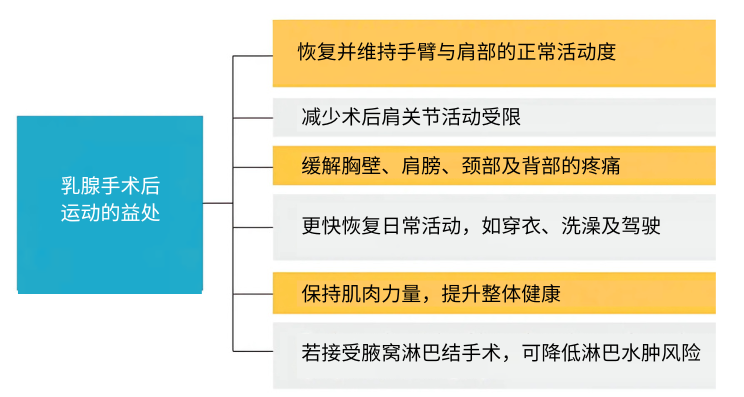

运动指南
1. 手术次日起开始锻炼(除非医生或物理治疗师建议暂停)
2. 在服用止痛药30至40分钟后开始锻炼
3. 进行锻炼时尽量配合深呼吸
4. 每日3次、坚持每天完成全部动作,直至手臂恢复全活动度
5. 养成每日固定时间锻炼的习惯(例如:早餐、午餐及晚餐后)
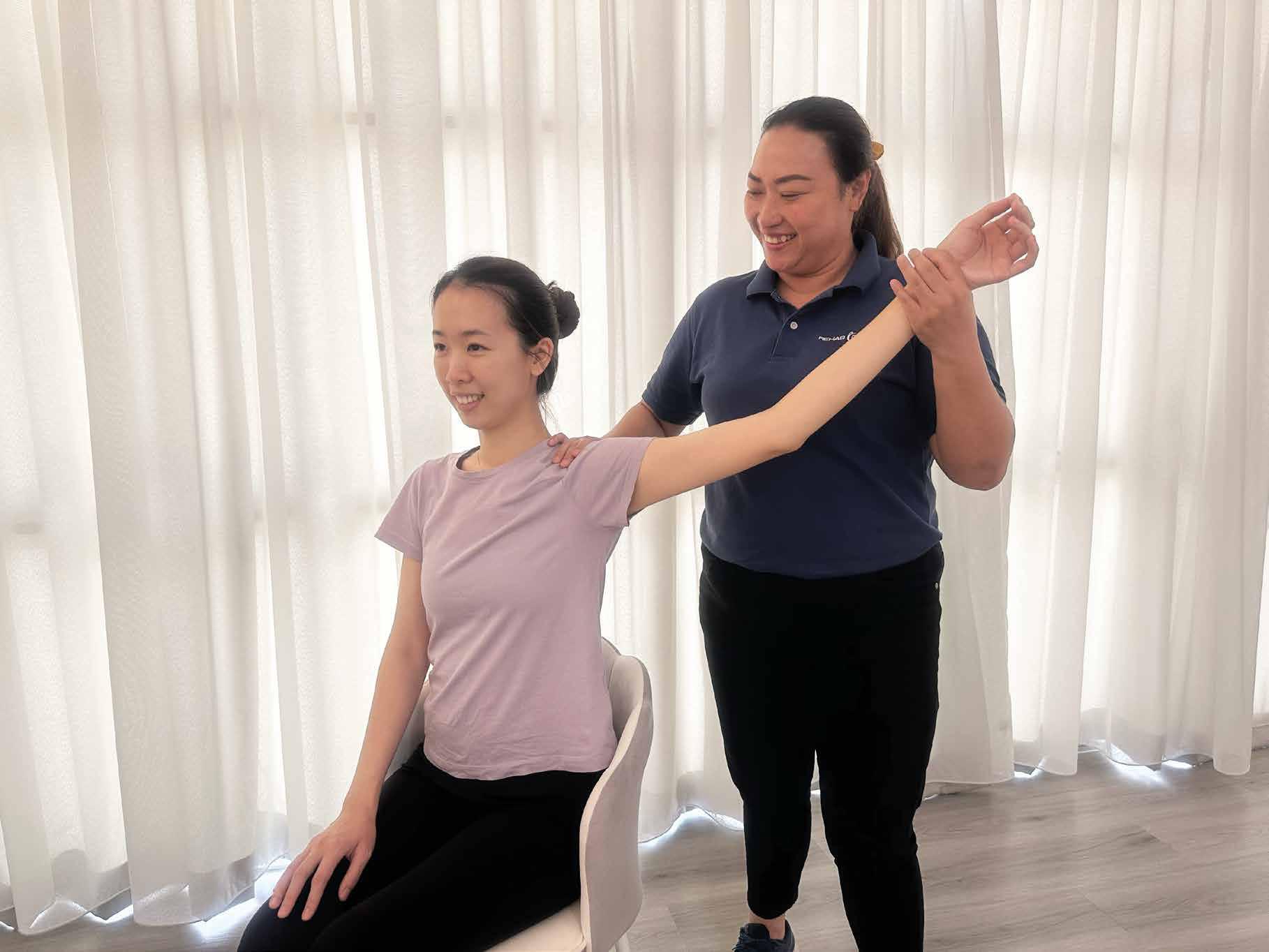 |
坐姿/仰卧运动这些运动可在坐椅上或卧床时进行。不进行练习时,将手臂置于枕头上可提升舒适度。 1. 握拳运动 缓慢握拳并用力,再轻轻张开手指放松。 2. 手腕运动 肘部置于枕头上支撑,手臂自然放于身体一侧,手腕前后弯曲活动。 3. 耸肩运动 缓慢将肩膀抬向耳朵,然后向后旋转。 4. 肘部伸展 弯曲手肘以手触肩,然后将肘部完全伸直。 |
站立运动
这些运动可增强手臂力量并缓解胸部与肩部肌肉的紧张。规律练习可逐步恢复肩关节的正常活动度。
1. 手臂伸展
双手在胸前扣握,肘部贴近身体。借助健侧手协助,将双臂向前伸展至肩高并使肘部伸直,然后收回至胸前。将肘部拉回时,带动肩胛骨向后收紧。
2. 手臂上举
双手互相推压以形成支撑,缓慢将手臂举过头顶;下放至髋部时保持互相支撑。
3. 双手抱头
双手仍保持扣握,置于头顶。缓慢轻柔地将双肘靠拢,再向后伸展。注意将肩部向后拉而不前伸颈部。初期可改为仰卧更易完成。保持5–10秒。
4. 双手抱颈
头部保持正直,双手扣于颈后,双肘向后伸展并保持5–10秒,拉伸胸壁肌群。练习时避免上身前倾。可在该姿势稍作休息,放松胸肌,有助于拉伸瘢痕组织并促进上肢引流。
5. 爬墙运动
面向墙站立,脚尖离墙约20–25厘米,双手置于肘高处贴墙。以手指沿墙“向上爬”至可达的最高位置,再缓慢滑回并放松。可用胶带标记高度以记录进展。
6. 毛巾拉伸
取一条轻薄浴巾或床单。健侧手持一端置于肩上方,患侧手持另一端置于背后髋部位。做“滑轮”样拉动,使毛巾沿背部上提至可达最高(类似擦干背部),停留5秒后重复。
恢复后运动
乳腺手术后的前6周,可进行轻度家务,但应短时进行并注意间歇休息。6周后可逐步恢复较重体力活动,除非医生或物理治疗师另有建议。 |
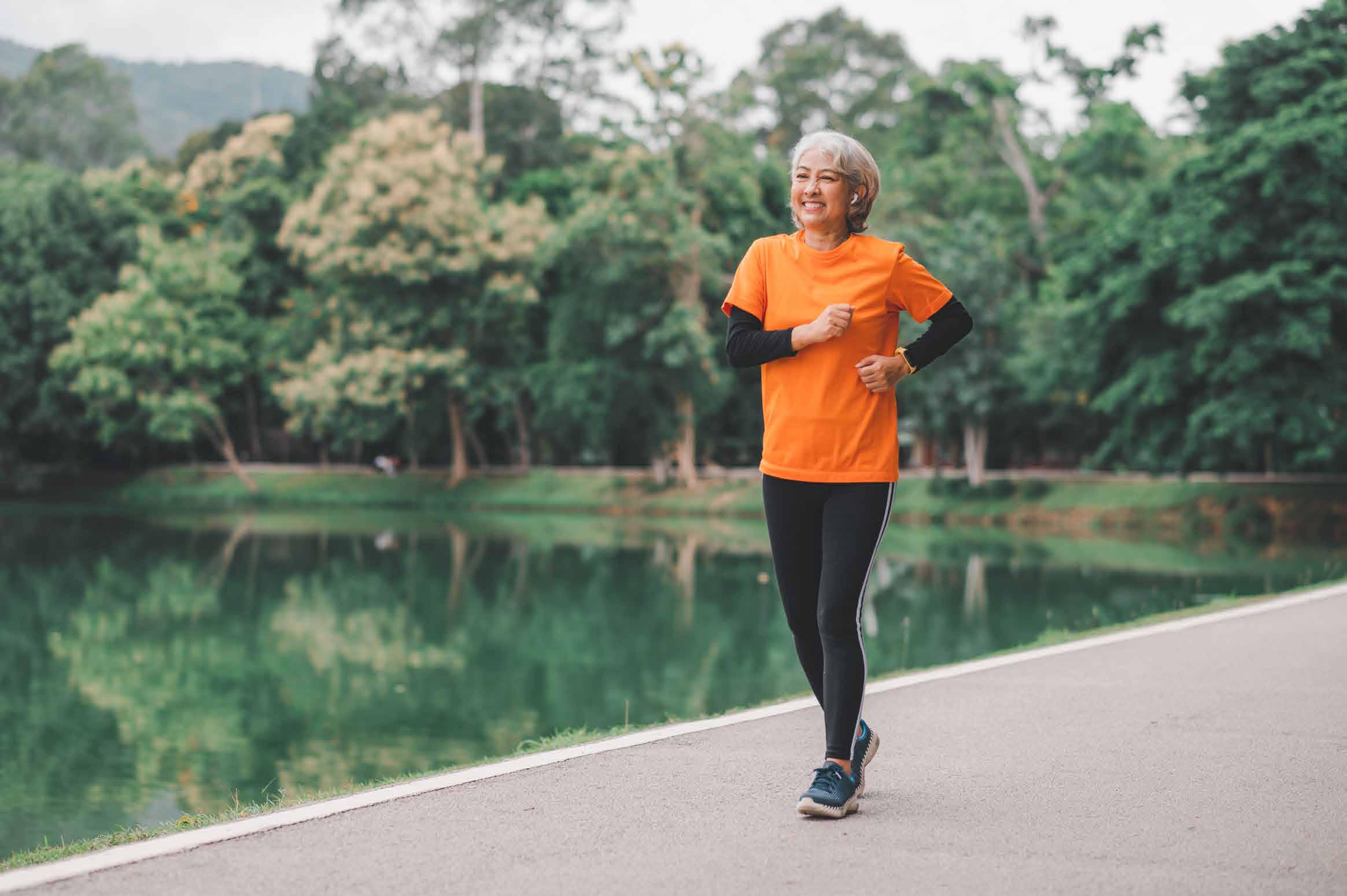 |
早期发现是关键

乳房筛查配套
RM198.00 起
与我们的专科医生会面

黄楚竤医生
乳房及乳房重建外科顾问医生
Dr Normayah Kitan
乳房及内分泌外科顾问医生
拿督叶静娴荣誉教授医生
乳房外科顾问医生
